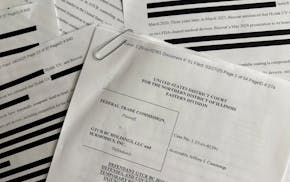Q: When a website requires me to change a password that I've forgotten, the website often says it will send me a message. The message supposedly will contain either instructions on how to make the change, or a code that I'm supposed to enter. But the message never arrives. My repair shop says it may be a "multifactor authentication problem." What should I do?
Ted Schwarz, Hoschton, Ga.
A: Multifactor authentication is a security measure that lets you prove to a website or online service that you are really who you claim to be. It reduces, but does not eliminate, the risk of someone impersonating you to gain access to your personal information.
For consumers, the most common form of this security technique is two-factor authentication. After you sign in to a website or service with your username and password (or after you use the wrong password enough times), you are automatically sent a message via e-mail or text. Depending on the method used by that website or service, you verify your identity by either responding to the message or entering a code that the message contains.
But there are a few things that can go wrong:
• If your computer or phone is set to the wrong calendar date or time of day, the two-factor identification message may never arrive.
• If the website or service has both your cellphone number (for texting) and your e-mail address, it may choose to send the ID message to you one way and not the other. Check both of them.
• Sometimes an e-mail message that you want to receive is accidentally routed to your spam folder. Look there for any misdirected messages.
Q: I've been trying to upgrade my laptop from Windows 7 to Windows 10 using the process you described (see tinyurl.com/y3gqnj5k). Everything works well until I'm asked for a "product key." When I enter the number from the bottom of my laptop, it's not accepted. What's wrong?
Rodney Duplisea, Winter Haven, Fla.
A: What you need is the Windows 7 "product key," a code that identifies your copy of Windows 7. It isn't listed on the bottom of your laptop; what you will find there is the PC's ID number.
Why do you need the product key? By entering that code, you are verifying to Microsoft that your copy of Windows 7 is legitimate, and that you are thus entitled to upgrade to Windows 10.
The Windows product key usually can be found on a sticker that's attached to the PC owner's manual or, if you have a Windows 7 DVD disk, to the envelope holding the disk. In addition, the product key is stored on your PC in the Windows 7 registry, a database of computer settings.
If you need to find the product key in the registry, you can use one of several free "key finder" programs that work with Windows 7 (see tinyurl.com/ycr5acto). Check the "what we like" and "what we don't like" lists for each product before selecting one. It's best to avoid programs that try to download unrelated software in addition to the program you want. (Alternatively, you can sometimes decline to accept these extra programs during the download process.) After you complete the upgrade process, run the free version of the Malwarebytes security program to make sure you haven't accidentally downloaded anything harmful or annoying (see tinyurl.com/y3ju6oov).
E-mail tech questions to steve.j.alexander@gmail.com or write to Tech Q&A, 650 S. 3rd Av., Suite 1300, Minneapolis, MN 55488. Include name, city and telephone number.

More Minnesotans died with HIV last year, but not from HIV

How a small Minnesota medtech company found itself in the FTC's crosshairs

UnitedHealth Group avoids shareholder vote on coverage denial audits in wake of CEO killing
Ramstad: What does 'Made in the USA' mean? Minnesota businesses like Nordic Ware are questioned.
